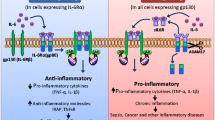Abstract
Osteosarcoma is the most malignant bone tumor characterized by high local aggressiveness and poor therapeutic outcome. Tumor-associated macrophages (TAM) have been shown to participate in the development and progress of many types of cancer cells. However, whether TAM may play a role in the pathogenesis of osteosarcoma is largely unknown. In a mouse model of human osteosarcoma implantation, we showed that the recruited macrophages at the site of the implanted tumor were polarized to an M2 subtype (same as TAM) during the development and growth of the osteosarcoma. In a loss-of-function experiment, we deleted these TAM with a specific macrophage-eliminating liposome, which resulted in decreased tumor growth. Moreover, when the epidermal growth factor receptor (EGFR) in the implanted cancer cells was inhibited by shRNA, the tumor failed to grow in response to the recruited macrophages. Taken together, for the first time, we show that the growth of an osteosarcoma is EGFR signaling-dependent and TAM-mediated. Our data suggest that TAM and EGFR may be good targets for treating human osteosarcoma.




Similar content being viewed by others
References
Yang J, Zhang W. New molecular insights into osteosarcoma targeted therapy. Curr Opin Oncol. 2013;25:398–406.
Tsuchiya H, Tomita K, Mori Y, Asada N, Morinaga T, Kitano S, et al. Caffeine-assisted chemotherapy and minimized tumor excision for nonmetastatic osteosarcoma. Anticancer Res. 1998;18:657–66.
Buddingh EP, Kuijjer ML, Duim RA, Burger H, Agelopoulos K, Myklebost O, et al. Tumor-infiltrating macrophages are associated with metastasis suppression in high-grade osteosarcoma: a rationale for treatment with macrophage activating agents. Clin Cancer Res. 2011;17:2110–9.
Endo-Munoz L, Evdokiou A, Saunders NA. The role of osteoclasts and tumour-associated macrophages in osteosarcoma metastasis. Biochim Biophys Acta. 1826;2012:434–42.
Ponten J, Saksela E. Two established in vitro cell lines from human mesenchymal tumours. Int J Cancer. 1967;2:434–47.
Gordon S. Alternative activation of macrophages. Nat Rev Immunol. 2003;3:23–35.
Gordon S, Martinez FO. Alternative activation of macrophages: mechanism and functions. Immunity. 2010;32:593–604.
Geissmann F, Manz MG, Jung S, Sieweke MH, Merad M, Ley K. Development of monocytes, macrophages, and dendritic cells. Science. 2010;327:656–61.
Ricardo SD, van Goor H, Eddy AA. Macrophage diversity in renal injury and repair. J Clin Invest. 2008;118:3522–30.
Biswas SK, Mantovani A. Macrophage plasticity and interaction with lymphocyte subsets: cancer as a paradigm. Nat Immunol. 2010;11:889–96.
Coffelt SB, Hughes R, Lewis CE. Tumor-associated macrophages: effectors of angiogenesis and tumor progression. Biochim Biophys Acta. 2009;1796:11–8.
Lamagna C, Aurrand-Lions M, Imhof BA. Dual role of macrophages in tumor growth and angiogenesis. J Leukoc Biol. 2006;80:705–13.
van Rooijen N, Bakker J, Sanders A. Transient suppression of macrophage functions by liposome-encapsulated drugs. Trends Biotechnol. 1997;15:178–85.
van Rooijen N, van Nieuwmegen R. Elimination of phagocytic cells in the spleen after intravenous injection of liposome-encapsulated dichloromethylene diphosphonate. An enzyme-histochemical study. Cell Tissue Res. 1984;238:355–8.
Plosker GL, Goa KL. Clodronate. A review of its pharmacological properties and therapeutic efficacy in resorptive bone disease. Drugs. 1994;47:945–82.
Kanis JA, McCloskey EV. Clodronate. Cancer. 1997;80:1691–5.
Xiao X, Gaffar I, Guo P, Wiersch J, Fischbach S, Peirish L, et al. M2 macrophages promote beta-cell proliferation by up-regulation of smad7. Proc Natl Acad Sci U S A. 2014;111:E1211–20.
Sica A, Mantovani A. Macrophage plasticity and polarization: in vivo veritas. J Clin Invest. 2012;122:787–95.
Klambt C. Egf receptor signalling: the importance of presentation. Curr Biol. 2000;10:R388–91.
Acknowledgments
This work was supported by internal funding from Liaoning Medical University.
Conflicts of interest
The authors have declared that no competing interests exist.
Author information
Authors and Affiliations
Corresponding author
Rights and permissions
About this article
Cite this article
Xiao, Q., Zhang, X., Wu, Y. et al. Inhibition of macrophage polarization prohibits growth of human osteosarcoma. Tumor Biol. 35, 7611–7616 (2014). https://doi.org/10.1007/s13277-014-2005-y
Received:
Accepted:
Published:
Issue Date:
DOI: https://doi.org/10.1007/s13277-014-2005-y




